That time of year is almost upon us, when excited kids transform into witches, ghosts, monsters and zombies; ready to hit the streets with the aim of collecting enough candy to give a sugar-rush that could redefine the word ‘hyper’ into something positively lethargic….



I don’t really remember celebrating Halloween as a child; the focus always seemed to be on Guy Fawkes Night, which of course follows closely after, on November the 5th…. Naturally, we all knew Halloween to be the night ghosts come out to haunt us and witches bomb around on their broomsticks….but certainly for me, that was as far as it went….


Halloween, as we now know it, didn’t really become big here in the UK until the 1980s; even as its popularity has increased there are just as many who are not fans. A poll conducted in 2013 revealed 70% of those asked admitted they would prefer trick and treaters not to knock on their door…. I’m sure we all know somebody who turns the lights off and pretends to be out on that particular evening….
So, on discovering it was Irish immigrants who took the customs of Halloween with them to the States, it got me wondering how the festival has its origins rooted in the Emerald Isle in the first place….
Halloween can be traced back to its Pagan roots of some 2,000 years ago…. Certainly the Romans had an Autumn festival, one that was dedicated to Pomona – a divine spirit, representing Nature, also known as a wood nymph – she was the goddess of the fruits of the tree, particularly apples…. This would give an explanation as to why apples are so often involved in the party games associated with Halloween, like apple-bobbing for instance….


The Pagan calendar year can be simplified into four seasonal sections: Imboic – February 1st; Beltane – May 1st; Lughnasa – August 1st and then the one we are concerned with; Samhain – which falls on the first day of the eleventh month. ‘Samhain’ (pronounced ‘sow-in’), being the Irish name for the equivalent English ‘November’, is also the name given to the ancient Pagan festival celebrating the Celtic New Year. Other Celtic regions have their own variations of the name; in Scottish Gaelic it is known as ‘Samhuinn’, whereas on the Isle of Man it is called ‘Sauin’ – it comes from ‘sam’ for summer and ‘fuin’, meaning ‘end’. In Wales however, it is named ‘Calan Gaeaf’ and in Brittany, ‘Kala Goanv’….

Whichever particular Celtic name applied, the celebration was (or indeed, for many still is…) essentially a fire festival. Falling at the time of year when all the crops had been gathered and stored, the animals brought in from the fields either to be slaughtered or over-wintered, it was a time for feasting and festivity…. Celebrations began on the last day of the year, with the ceremonial lighting of bonfires and the sacrificing of animals – the bones being thrown into the fire as an offering. It was also known as the Feast of the Dead; being the last day of the year – a time of transition – it was believed that the barrier between the mortal Earth and the ‘Otherworld’ was at its thinnest. Spirits of departed loved ones were invited to return and visit their Earthly homes and families…. Pagans do not fear death and old age is revered as it brings with it wisdom…. It was believed the returning spirits could help the Druid priests predict the future, fortune-telling was very much a part of the celebrations. Of course, with the path between the Otherworld and human World being open, it was not just invited spirits who made their presence known; this is where the ‘spooky’ side of Halloween comes from. Malevolent spirits, banshees and fairies also came over from the other side, bringing their evil with them. People would dress in scary costumes with grotesque masks and animal heads to scare away the wicked spirits…. Sometimes offerings of food would have been left out in the home, or by the nearest hawthorn tree (where fairies were believed to reside)….
After the festival people would relight the fires within their own homes using flames from the sacred bonfire – thus ensuring protection of the household during the coming year. The following day, the cold ashes from the bonfire would have been spread on the fields to bring luck for the next harvest….
It was around the 8th Century that the Church, in an attempt to quell Pagan beliefs, made November the 1st ‘All Saints Day’; the evening before became ‘All Hallows’ – later to become known as ‘Hallowe’en’. As hard as it tried, the Church was unable to prevent many of the old customs from staying with us, in one form or another….

Many of this Pagan New Year celebration’s traditions are reminiscent of those we know from our own New Year today….the casting out of the old and welcoming in of the new…. It could be said that the UK’s customs of ‘first footing’, fire festivals and the Welsh ‘Calennig’ – (a festive form of trick and treating) – all stem from Samhain….
Halloween trick and treating in Britain and Ireland goes back as far as the Middle Ages, at least to the 16th Century…. Dressed in ghoulish garb, people would go from door to door reciting prayers, poems and verses – (delivering tales of bad fortune to come if not welcomed) – in exchange for gifts of food, especially ‘soul-cakes’…. “Mercy on all Christian souls for a soul-cake” would be sung at doors and under windows in order to beg for one of the small round cakes, decorated with a cross on the top – either simply scored on or perhaps more elaborately made using currants or other dried fruits….
Trick and treating didn’t actually become popular in the States until the 1920s/30s. The first recording in North America was in Ontario, Canada in 1911….
It wasn’t until the 1800s that it became common-place to display Jack-o’-lanterns in windows to ward off evil spirits…. In days gone by lanterns would have been made by hollowing out and carving faces into vegetables such as turnips and swedes….

Upon arriving in America, Irish immigrants encountered pumpkins; being so much easier to carve, the pumpkin soon took over and became one of our main symbols of Halloween….

The Irish version tells of a farmer, ‘Stingy Jack’ or ‘Drunk Jack’. Jack enjoyed a drink, so much so he ran up a huge debt at his local pub, which he was unable to pay. He did a deal with the Devil, who paid off his bar-tab in exchange for Jack’s soul…. When the Devil arrived to collect his payment, Jack tricked him into climbing up a tree – he then carved a cross into the base of it. The Devil, unable to descend the tree had no choice but to release Jack from the debt…. When the time came for Jack to knock on the Pearly Gates, he was denied entrance to Heaven and so had to try his luck with Hell…. The Devil refused to allow him in, leaving Jack with the only option of wandering through the World of Lost Souls for the rest of eternity…. To make things a little easier for him, the Devil gave Jack a burning coal from the fires of Hell, which he carried in a lantern made from a carved turnip….
Another account tells of a wicked blacksmith named Will – who on reaching Heaven’s gates was given a second chance by St. Peter to redeem his ways. Will continued to live a life of wickedness and so was doomed to wander the Earth for evermore….the Devil gave him a hot coal to keep him warm and guide his way…. Will then used the light to lure travellers at night from the safe paths as they crossed over marshes, bogs and swamps. This tale entwines with the folklore myth of Will-o’-the-wisp…. People travelling at night would sometimes be drawn towards ghostly lights dancing and swirling in boggy areas – on approach the lights would disappear; some believed it was malevolent fairies, others said it was Will-o’-the-wisp….

What they were actually seeing was ‘Ignis Fatuus’ (friars lantern)….an eerie, phosphorescent aura, seen at night, over swamps and bogs – believed to be spontaneous combustion of gas caused by decaying organic matter; also known as ‘marsh gas’….


Perhaps we should be reviving the tradition of giving out soul-cakes instead…. If you fancy giving them a try, they can be made 2 or 3 days in advance and stored in an airtight container….
Try adding dried fruit to the mixture to add a bit more flavour; cherries, cranberries, dates etc all work well…. Me – I’m off to design my Jack-o’-lantern now; last year I used the pumpkin flesh to make caramelised pumpkin and chilli jam – (the caramelised bit was an accident – but it was absolutely delicious)…. Unfortunately, I made the recipe up as I went along and didn’t think to write it down – I will try and replicate it again this year and will pass the recipe on if I’m successful….as it really was rather good, even if I say so myself….
Meanwhile….

Soul-cakes (makes 12)
6 oz butter
6 oz sugar
3 egg yolks
1 lb plain flour (sifted)
Pinch of salt
Milk to mix
4 oz currants (optional)
Pre-heat oven to 180C / gas 5
Cream butter and sugar together; add and blend 1 egg yolk at a time
Fold in sifted flour (add dried fruit if using). Gradually add enough
milk to form a soft dough
Roll out and cut into rounds with a cookie cutter. Either score a cross
on to the top of each cake with a knife or use currants (or other dried
fruit) to make a cross shape
Bake on a greased baking sheet for 10-15 minutes or until golden brown.
Cool on a wire rack….
A 19th Century souling rhyme….
A soul! a soul! a soul-cake!
Please good Missus, a soul-cake!
An apple, a pear, a plum or a cherry,
Any good thing to make us merry.
One for Peter, two for Paul,
Three for Him, who made us all….
Happy Hallowe’en…….X









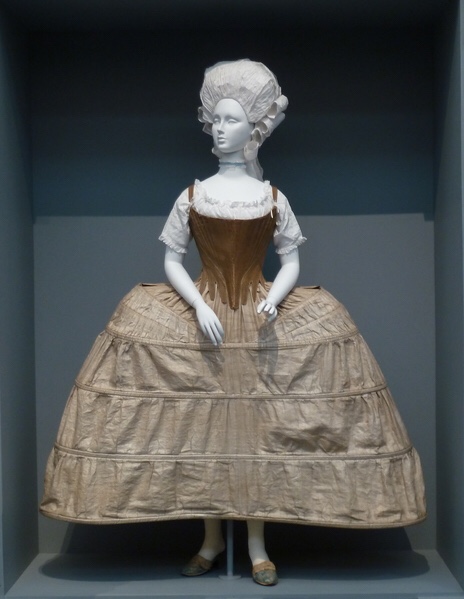





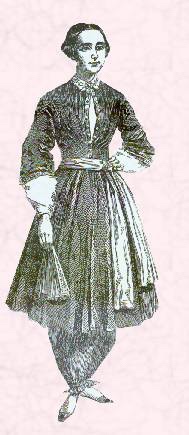













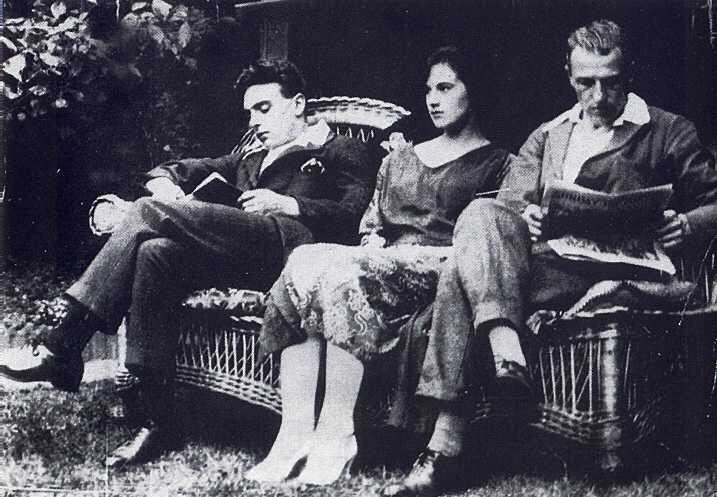
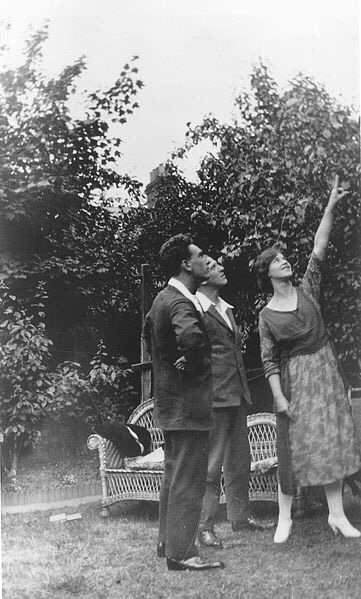
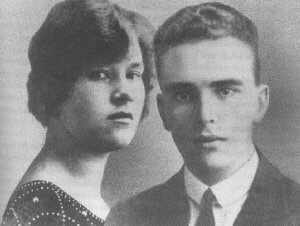









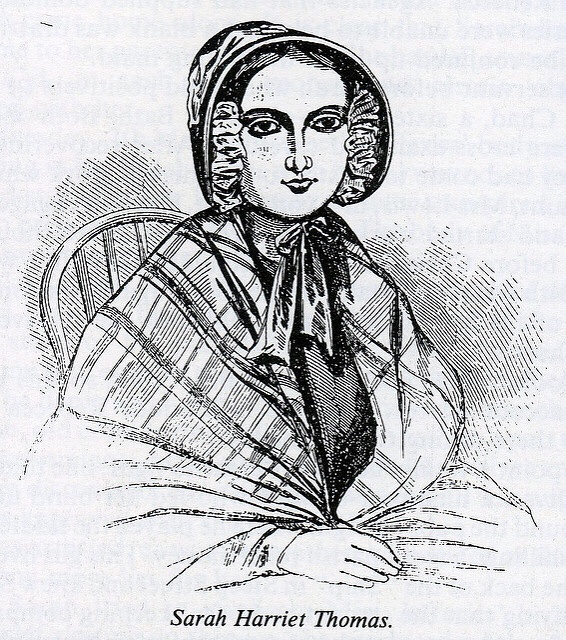 Later that same year on the 13th of November a rare and unusual case was seen – the double execution of a husband and wife ~ Frederick and Maria Manning ~ for the murder of Maria’s lover Patrick O’Connor, for financial gain; they then buried him under the kitchen floor…. The couple were hanged side by side on the rooftop of Horsemonger Lane Gaol (Surrey’s main prison and place of execution up until its closure in 1878); a crowd of approximately 50,000 turned out to watch the spectacle – amongst them one Charles Dickens….
Later that same year on the 13th of November a rare and unusual case was seen – the double execution of a husband and wife ~ Frederick and Maria Manning ~ for the murder of Maria’s lover Patrick O’Connor, for financial gain; they then buried him under the kitchen floor…. The couple were hanged side by side on the rooftop of Horsemonger Lane Gaol (Surrey’s main prison and place of execution up until its closure in 1878); a crowd of approximately 50,000 turned out to watch the spectacle – amongst them one Charles Dickens….


